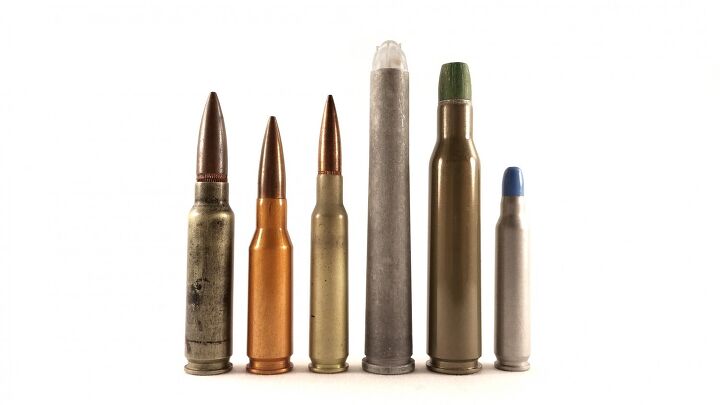The metallic cartridge case was invented in the 1840s, and – starting in the 1860s – its military application brought with it a host of of advantages for the soldier: Now, ammunition was self-contained, weatherproof, and durable. Yet, despite it being a massive advance, the metallic cartridge wasn’t an across the board triumph. With the addition of a metal case, ammunition became heavier, and cost more to manufacture. In the early days of metallic cartridges, military weapons were slow to fire, and fired heavy bullets that made up the overwhelming percentage of mass of the ammunition, so this advantage was small. Ironically, though, the metallic cartridge allowed the invention of faster firing designs that expended ammunition more quickly, and as ammunition caliber shrunk and average bullet weight dropped, the percentage of mass contained in the metallic case grew.
With the .30-06 caliber of 1906, almost 50% of the weight of ammunition carried by the soldier was in metallic cartridge cases that had no effect on the enemy at all, and were just thrown away after firing. In the late 1940s, after two world wars and a massive expenditure of lives and resources, nations began to explore ways to reduce the weight carried by the soldier, starting with the metallic case.
We will explore other potential ways to reduce weight, but today we’ll look at the concept of a metallic case made of aluminum, rather than brass or steel. Aluminum is far less dense than either of those materials (2.71 g/cm^3 versus 8.5 g/cm^3 for cartridge brass, and 7.85 g/cm^3 for mild steel), and so it made a natural first candidate for a drop-in replacement for the traditional metallic case. The 68% lighter case material (vs. brass) could lead to a reduction in ammunition weight of 25-35%, and the use of less-strategic aluminum could save copper resources in the event of a major war.
Aluminum, though, has some problems as a cartridge case. Weaker than brass or steel, the material is also subject in the application of a high pressure small arm to a phenomenon known as “burn through”, where the case is punctured by high pressure gases, possibly due to melting or burning. In lower pressure rounds like pistol ammunition, burn-through is not a problem, but in the 50-60,000 PSI range of a rifle round, this problem is so severe that aluminum cases have never caught on, despite their obvious advantages versus brass and steel.
Aluminum cased ammunition may be down, but it’s not out. New alloys, and different ammunition configurations could allow a resurgence of the idea, but to me the most likely application for aluminum in modern ammunition cases is as the base of a composite polymer-metallic case, which we’ll explore in the next episode!
 Your Privacy Choices
Your Privacy Choices
